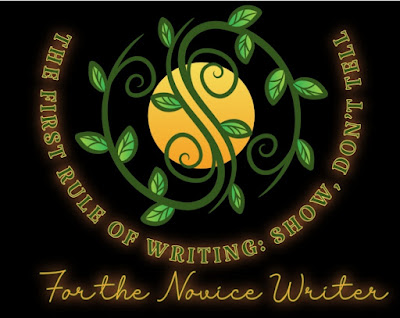The Folded Letter: Mastering the Art of Showing, Not Telling in Fiction
By Olivia Salter
“Don’t tell me her heart was broken; show me the way she folds the letter, slow and trembling, as if sealing the hurt inside forever.”
Fiction lives and breathes through what it reveals without directly stating. The difference between telling and showing is often the difference between a flat page and one that pulses with emotion. To tell is to inform the reader; to show is to invite them to feel. The reader doesn’t just watch the story unfold—they experience it through sensory detail, gesture, silence, and subtext.
The Power of Suggestion
When writers tell, they rely on summary: “She was sad.” It’s quick, efficient, but emotionally distant. When writers show, they create scenes that awaken empathy: “She traced his name with her fingertip until the ink blurred.” That simple action carries weight—it gives readers a window into emotion without naming it. Readers become detectives of the heart, gathering meaning from behavior, tone, and imagery.
Showing also respects the reader’s intelligence. It trusts that they can feel the ache without being spoon-fed the sentiment. It’s the art of restraint—leaving space for imagination. A trembling hand says more than an entire paragraph on heartbreak. A forced laugh can echo louder than a scream.
The Language of the Body and the Unspoken
Human emotion often hides in the physical. The way a character moves, looks away, or pauses mid-sentence reveals volumes. In fiction, these moments are gold. Consider dialogue—what a character doesn’t say can be more revealing than what they do. Subtext is where truth lives. When a character insists, “I’m fine,” but grips the edge of the table, the reader knows better.
Silence, too, is a form of showing. A conversation that stops short, an unanswered text, or a dinner table gone quiet—these are emotional landscapes. They show tension, longing, or resentment more effectively than a narrator’s explanation ever could.
The Sensory Thread
Showing thrives in sensory detail. Smell, touch, taste, sound, and sight are the writer’s palette. The musty scent of an old coat can carry nostalgia; the metallic tang of blood can signal fear or violence. These details transport readers directly into the scene, engaging not just their minds but their bodies.
Instead of saying, “He was nervous,” write, “His shirt clung damp against his back.” Rather than, “She loved him,” try, “She memorized the pattern of freckles on his wrist like a map she never wanted to lose.” The difference is intimacy—the reader doesn’t just know what the character feels; they feel it too.
Balancing Show and Tell
Even so, showing everything can exhaust both writer and reader. The key is balance. Sometimes a moment calls for summary—a transition, a passing event, or a character reflection. Telling can anchor the pacing or provide clarity. The trick is to use it sparingly, like punctuation between emotional beats.
When the heart of a story is at stake—conflict, revelation, transformation—show. When connecting scenes or providing background—tell. Think of telling as the frame, and showing as the painting itself.
The Folded Letter Revisited
The quote that began this piece is a reminder that fiction’s beauty lies not in what’s declared, but in what’s felt between the lines. “Don’t tell me her heart was broken—show me the way she folds the letter, slow and trembling, as if sealing the hurt inside forever.” In that moment, the heartbreak isn’t just described—it’s witnessed. The act becomes metaphor. The physical gesture becomes emotional truth.
That’s the essence of great storytelling: transforming emotion into action, thought into image, and pain into poetry. Showing turns readers from observers into participants. It lets them live inside the story’s pulse.
When you write, don’t chase description—chase feeling. Let your characters reveal themselves in what they do, what they fail to say, and what they can’t bear to let go.
That’s where fiction stops being words—and becomes life.







.jpg)


